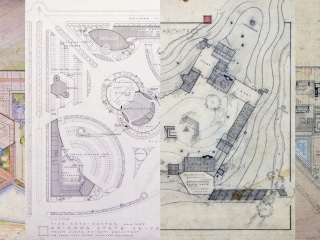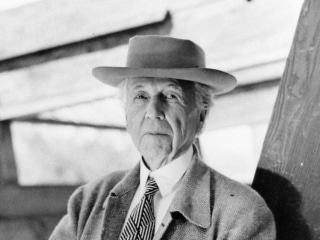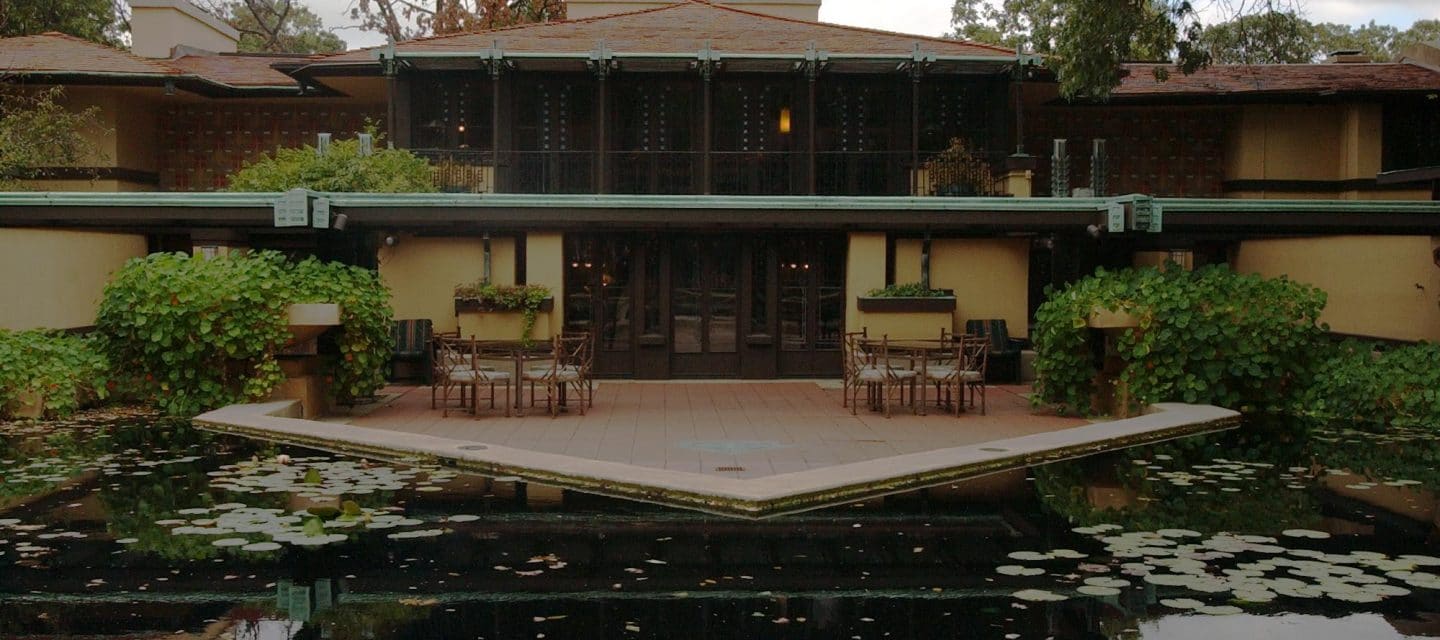
Growing Up Wright
Frank Lloyd Wright Foundation | Apr 17, 2022
Jim Dublinski recalls the joy and inspiration of growing up in Frank Lloyd Wright’s Avery Coonley House.
Jim Dublinski, who lived in the Avery Coonley House from about the age of nine until he was in college, recalls that growing up in Riverside, Ill., was a magical experience.
“The whole town was designed by Frederick Olmstead,” he explained. “So, you’re living in a Frank Lloyd Wright house, in the first planned community, designed in the late 1860s. So even walking to school, you walk through these parkways. And you go through this Romanesque village. And on the way home you can walk through the park along the river.”
The Avery Coonley House is an elaborate Prairie style residence with a Coach House, Gardener’s Cottage, and accompanying gardens. The home marks the first time that Wright used “zoned planning.” This approach involves dividing spaces based on their function, and he would use it for the rest of his career.
“Nothing is direct,” Jim said. “You go into these spaces, and you turn left or right. You go into these little hallways that expand into these big rooms. And it’s very welcoming in a way — and also very theatrical.”
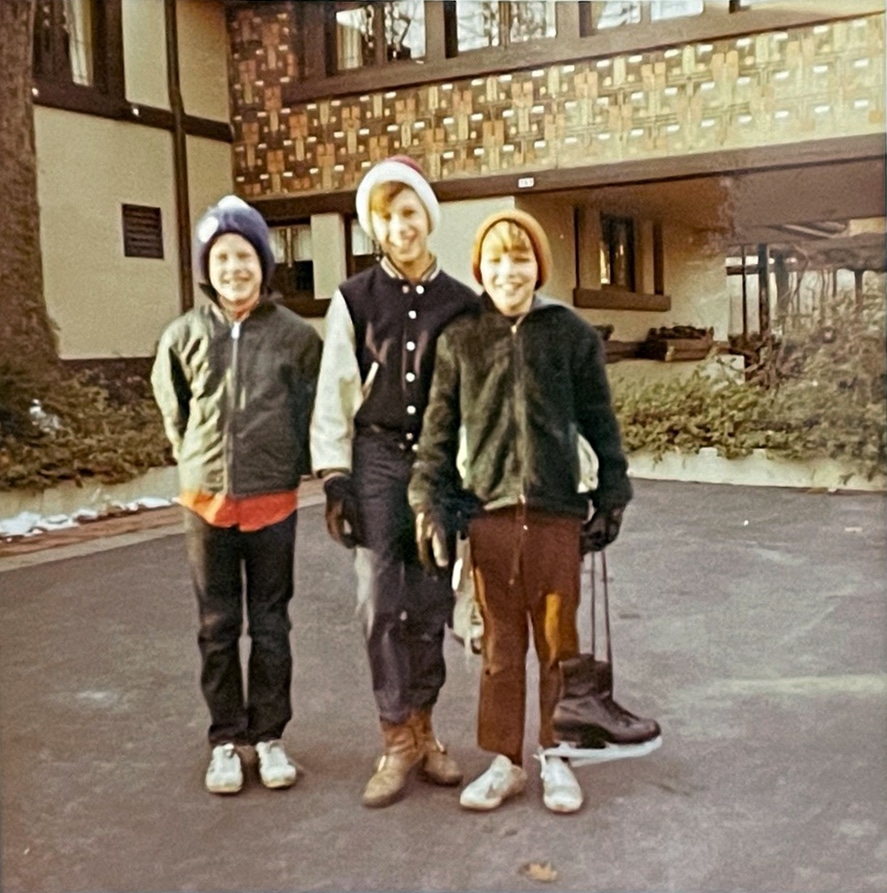
Jim Dublinski and friends outside the Coonley House.
Through his windows, he could see the workings of nature, from season to season. Inside the house, patterned light created a world of imagination and wonder.
“When I was growing up, one of the biggest influences was light and how it impacted play during the day. Whether it was shadows from the stained-glass windows or the hallways or the reflective light. It was all very impactful.”
“…the windows were an intimate part of living in the house.”
Each room had a spatial arrangement with nature that created a dynamic relationship to outside light that shifted daily, seasonally. Windows enclosed three sides of the living room with a balcony on one side. The snow globe effect in winter made him feel like he was a part of the serenity outside as snow gathered and squirrels frolicked. In the fall, the glass reflected the autumnal kaleidoscope into the room in painted patterns. In summer, he was bathed in green. And during thunderstorms, they sat with the windows open, protected by the large overhangs, as the storm boomed just outside.
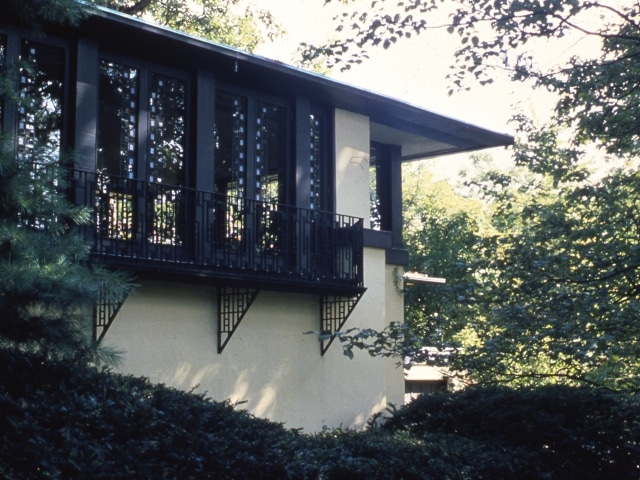
“So, the windows were an intimate part of living in the house,” he said. “You saw the change of season more than any place I’ve lived. You could experience it all because the large overhangs let it all in.”
But there was also a downside to so many windows. They needed to be cleaned, and his mother was imaginative in securing help.
“There were so many windows. And each window had so many tiles,” he said. “So, for a punishment, like if you didn’t clean up your room, you were sentenced to clean up some of the windows.”
He has vivid memories of the play inspired by the house during the holidays — especially for hide-and-seek. “One of the fun things is that it was a maze,” he said. From room to room, down long halls, to the balconies and courtyards, the house unfolded into a fantastic playland.
While as a child he found the house had its own magic, it wasn’t until college that he realized that others found his home special, too. Sitting in an art history class, he was watching the professor’s slide show on Frank Lloyd Wright and the Prairie Style — and his own house popped up on the screen. He recalls thinking, “Oh, that’s kind of weird.”
“…it’s very welcoming in a way — and also very theatrical.”
To this day, the lessons learned in the house influence his life. After spending years in the corporate world, Jim is now in a different environment: the great outdoors. As a hiking tour guide, Jim tries to help others capture the love and respect for nature he developed as a child.
“The moments I enjoy most are when I can get outside. It’s very rewarding when you see people have an ‘ahhh’ moment, and they’re really enjoying what they’re doing in the moment, whether hiking or on the river or biking,” he said. “I believe that getting outside makes you happier and healthier.”
In addition to his love for nature, growing up in the Avery Coonley House shaped the way he sees the world in other ways, too.
“I think some of the principles that are probably most lasting are how he constructed within the confines of the landscape itself,” he said. “The Coonley house is very horizontal, similar to the prairie.”

Jim reflected on how, like Wright, the best artists approached their subjects the same way. “Simplicity is important. A lot of good composition is not super complex. It’s simple elements.”
That enjoyment of simple beauty and joy color his life in other ways, too. Jim and his family regularly vacation in Michigan, on the shores of Lake Michigan in an abandoned logging town from around the same era as the Avery Coonley House.
“There are no TVs. Cell signal is weak at best, which is okay,” he explained. “So, we begin our day by walking along the forest over the dunes right on Lake Michigan — just doing basic stuff with family and friends. We’ve been doing that for years and years. It’s simple, but it means the most to us.”
